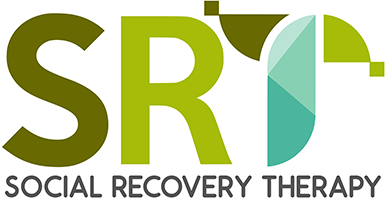SRT Cognitive Work
SRT Cognitive Work is always informed by the social recovery formulation and is aimed at augmenting the other intervention components. The primary goal of any cognitive work is to modify unhelpful or unrealistic thoughts, assumption, and beliefs that serve to maintain inactivity and generate more helpful or realistic, alternative cognitions or explanations that might lead to engagement in structured activity that is meaningful to the individual. More broadly, cognitive work aims to improve self-esteem and self-efficacy in individuals, in conjunction with behavioural work, by helping them to engage in further activity linked with their goals, interests and values. As such individuals enter an updated (often more positive or realistic) cognitive-behavioural cycle which is used to re-formulate social recovery.
SRT makes use of cognitive techniques including:
- Thought records
- Positive data logs
- Positive self-statements
- Appraising belief advantages and disadvantages
- Using surveys
SRT Cognitive Work makes use of strategies which focus on:
1. Generating alternative explanations and modifying cognitive biases or negative thoughts.
- Examining objective evidence obtained through behavioural assessments, experiments and exposure.
- Using outcomes of behavioural work to challenge previously held negative cognitions and generate alternative cognitions that can then further be tested.
2. Improving an individual’s sense of hope about the future and their capabilities is vital but often difficult for the individual to prioritise initially; as often identified within an initial formulation.
- Generating a sense of hope is something that is nurtured gradually throughout the intervention relying upon a successful therapeutic alliance, rapport and updated cognitions as a result of exposure to positive experiences.
- Initially, the therapist often holds the hope for the individual and acts as a ‘cheerleader’ in their quest to engage in activities that fit with their interests and values.
- Holding this hope for the individual seems to enhance the individual’s motivation to ‘give things a go’ and, following cumulative therapeutic gains, a shift is often noticed where hope is the progressively owned by the individuals themselves.

